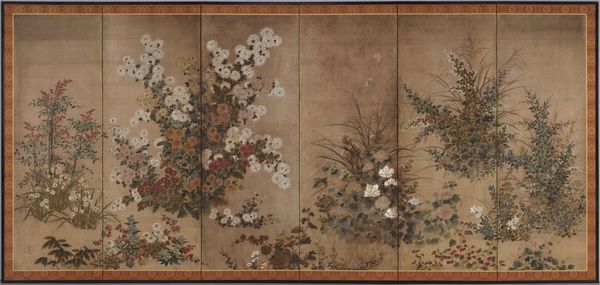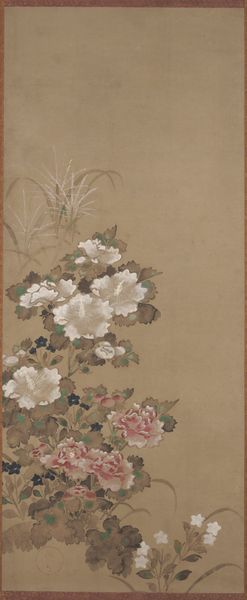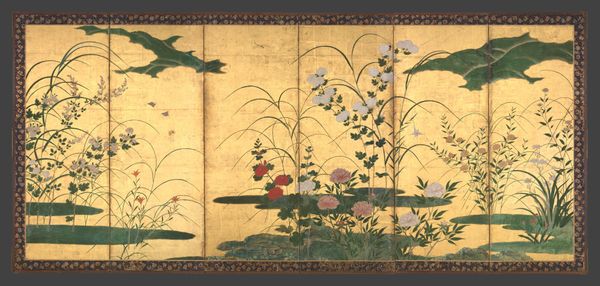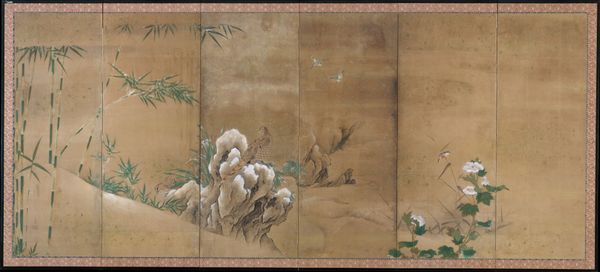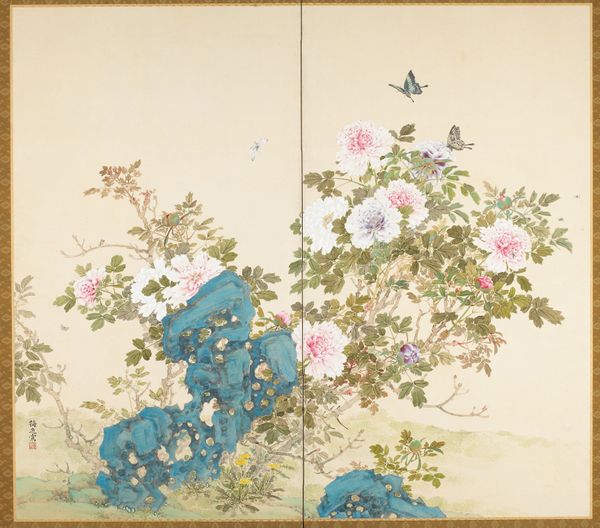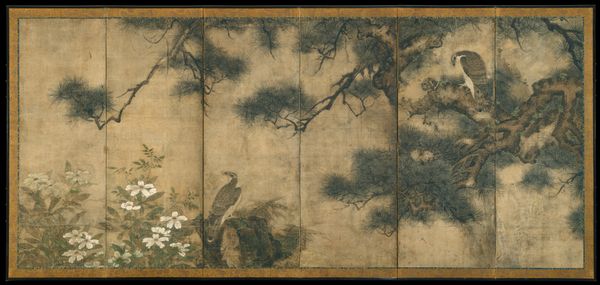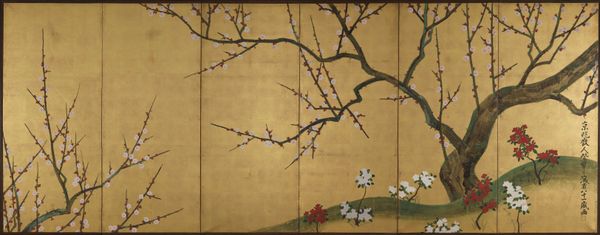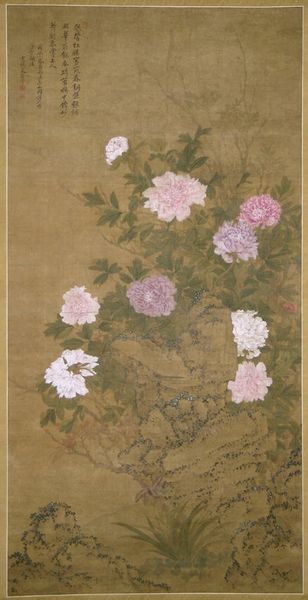
Flowers of the Four Seasons c. 17th century
0:00
0:00
Dimensions: painting proper: H. 157.5 cm (62 in.) overall with mount: H. 172.9 Ã W. 364.8 cm (68 1/16 Ã 143 5/8 in.)
Copyright: CC0 1.0
Curator: This magnificent six-panel screen, "Flowers of the Four Seasons," currently residing at the Harvard Art Museums, has been traditionally attributed to Tawaraya SÅtatsu. Its generous dimensions certainly command attention. Editor: It’s immediately striking how the muted tones evoke a sense of quiet contemplation. The artist's choice to depict each season's flora creates a symbolic representation of the cyclical nature of life. Curator: Indeed, such depictions were often commissioned by the elite, serving not merely as decoration but as a reflection of their cultivated understanding of nature and the cosmos. The placement of certain flowers may allude to specific political or personal narratives of the commissioner. Editor: I see it as a meditation on the fleeting beauty of existence and our interconnectedness with the natural world. The flowers act as metaphors for human experiences, reminding us of the ephemeral nature of our own lives. Curator: It's fascinating how such screens shaped the interior spaces of their time, dictating social interactions and even reinforcing hierarchies. Editor: By embracing the symbolism of the flora, and recognizing the sociopolitical context, we can fully appreciate the artwork's significance. Curator: Precisely. The beauty of this screen lies not only in its aesthetic appeal but also in its capacity to bridge history and contemporary social theories.
Comments
No comments
Be the first to comment and join the conversation on the ultimate creative platform.
